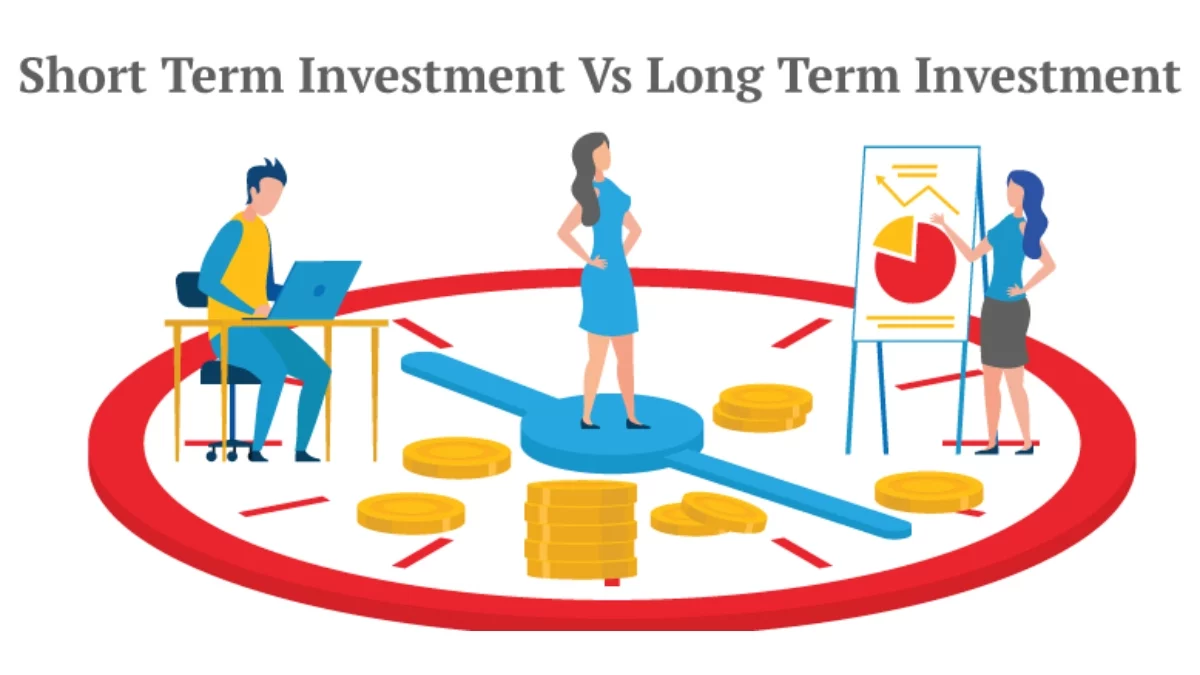Table of Contents
Short-Term vs Long-Term Investing
Investing is a critical component of building wealth over time but it can also be complex and challenging to navigate. Two primary approaches to investing are short-term and long-term investing. Short-term investing refers to investments with a holding period of less than one year, while long-term investing refers to investments with a holding period of several years or more.
The choice between short-term and long-term investing depends on several factors, including your investment goals, risk tolerance and time horizon.
Short-Term Investing
Short-term investing refers to investments with a holding period of less than one year. This can include investments in stocks, savings bonds and mutual funds. Short-term investors are typically looking to make quick profits by capitalizing on short-term market trends and fluctuations.
Advantages of Short-Term Investing
- High liquidity: Short-term investments are generally more liquid, meaning they can be easily bought and sold.
- Quick profits: Short-term investors can make quick profits by capitalizing on short-term market trends and fluctuations.
- Diversification: Short-term investors can diversify their portfolio with a variety of short-term investments to spread out their risk.
Disadvantages of short-term investing:
- High risk: Short-term investments are generally more volatile and carry a higher level of risk than long-term investments.
- Limited returns: Short-term investments typically offer lower returns than long-term investments due to their shorter holding period.
- Emotional decision-making: Short-term investing can be influenced by emotions and lead to impulsive decision-making.
Tips for short-term investing:
- Develop a trading plan and stick to it to avoid emotional decision-making.
- Use stop-loss orders to limit losses and protect profits.
- Focus on market trends and movements to identify short-term opportunities.
Short-term investing can be a viable option for investors looking to make quick profits by capitalizing on short-term market trends and fluctuations. It comes with its own set of advantages, including high liquidity, quick profits and diversification. However, short-term investing also carries a higher level of risk and limited returns compared to long-term investing.
To succeed in short-term investing, investors should consider developing a trading plan, using stop-loss orders and staying up to date on the latest market trends and movements. It’s important to avoid emotional decision-making and to focus on the fundamentals of the market.
While short-term investing can be an effective strategy, it should be approached with caution and careful consideration of one’s investment goals and risk tolerance. Ultimately, finding the right balance between short-term and long-term investments can help investors achieve their desired returns and long-term financial goals.
Long-Term Investing
Long-term investing refers to investments with a holding period of several years or more. This can include investments in stocks, bonds, mutual funds and other securities. Long-term investors are typically looking to build wealth slowly and steadily over time by taking advantage of long-term market trends and economic growth.
Advantages of Long-Term Investing:
- Compound interest: Long-term investors can take advantage of the power of compound interest to grow their investments over time.
- Lower risk: Long-term investments are generally less volatile and carry a lower level of risk than short-term investments in companies such as tech startups, as an example.
- Higher returns: Long-term investments typically offer higher returns than short-term investments due to their longer holding period.
Disadvantages of Long-Term Investing:
- Low liquidity: Long-term investments are generally less liquid, meaning they cannot be easily bought and sold.
- Slow profits: Long-term investors need to be patient and wait for their investments to grow over time.
- Limited flexibility: Long-term investors may miss out on short-term investment opportunities due to their longer holding period.
Tips for Long-Term Investing:
- Try to achieve a diversified portfolio of investments.
- Invest in quality companies with a strong track record of growth.
- Avoid emotional decision-making and focus on long-term market trends and economic growth.
Long-term investing can be an effective way for investors to build wealth slowly and steadily over time by taking advantage of long-term market trends and economic growth. It comes with its own set of advantages, including the power of compound interest, lower risk and higher returns compared to short-term investing.
To succeed in long-term investing, investors should focus on building a diversified portfolio of long-term investments, investing in quality companies with a strong track record of growth and avoiding emotional decision-making. It’s important to be patient and wait for investments to grow over time, while also keeping an eye on long-term market trends and economic growth.
The choice between short-term and long-term investing largely depends on your investment goals and risk tolerance. Short-term investing can offer quick profits but also carries a higher level of risk and requires more active management. Long-term investing, on the other hand, requires patience and a long-term perspective but can offer higher returns and lower risk over time. It’s important to carefully consider your investment goals and risk tolerance before choosing between short-term and long-term investing.

